NPs Basic Information

|
Name |
Peniphenone
|
| Molecular Formula | C14H10O6 | |
| IUPAC Name* |
2-(2,6-dihydroxybenzoyl)-3-hydroxybenzoic acid
|
|
| SMILES |
C1=CC(=C(C(=C1)O)C(=O)C2=C(C=CC=C2O)O)C(=O)O
|
|
| InChI |
InChI=1S/C14H10O6/c15-8-4-1-3-7(14(19)20)11(8)13(18)12-9(16)5-2-6-10(12)17/h1-6,15-17H,(H,19,20)
|
|
| InChIKey |
NIEOVCLPEHLZFT-UHFFFAOYSA-N
|
|
| Synonyms |
Peniphenone
|
|
| CAS | NA | |
| PubChem CID | 139585066 | |
| ChEMBL ID | NA |
*Note: the IUPAC Name was collected from PubChem.
Chemical Classification: |
|
|
|---|
——————————————————————————————————————————
NPs Species Source
| Endophyte ID | Endophyte Name | Family | Genus | Taxonomy ID | GenBank ID | Closest GenBank ID | Reference | |
|---|---|---|---|---|---|---|---|---|
| Endophyte ID | Endophyte Name | Family | Genus | Taxonomy ID | GenBank ID | Closest GenBank ID | Reference |
NPs Biological Activity
| Bioactivity Name | Target ID | Target Name | Target Type | Target Organism | Target Organism ID | Potency of Bioactivity | Activity Type | Value | Unit | Endophyte ID | Endophyte Name | |
|---|---|---|---|---|---|---|---|---|---|---|---|---|
| Bioactivity Name | Target ID | Target Name | Target Type | Target Organism | Target Organism ID | Potency of Bioactivity | Activity Type | Value | Unit | Endophyte ID | Endophyte Name |
NPs Physi-Chem Properties
| Molecular Weight: | 274.22 | ALogp: | 2.3 |
| HBD: | 4 | HBA: | 6 |
| Rotatable Bonds: | 3 | Lipinski's rule of five: | Accepted |
| Polar Surface Area: | 115.0 | Aromatic Rings: | 2 |
| Heavy Atoms: | 20 | QED Weighted: | 0.638 |
——————————————————————————————————————————
NPs ADMET Properties*
ADMET: Absorption
| Caco-2 Permeability: | -5.623 | MDCK Permeability: | 0.00000709 |
| Pgp-inhibitor: | 0.002 | Pgp-substrate: | 0 |
| Human Intestinal Absorption (HIA): | 0.232 | 20% Bioavailability (F20%): | 0.903 |
| 30% Bioavailability (F30%): | 0.998 |
——————————————————————————————————————————
ADMET: Distribution
| Blood-Brain-Barrier Penetration (BBB): | 0.164 | Plasma Protein Binding (PPB): | 99.41% |
| Volume Distribution (VD): | 0.348 | Fu: | 1.12% |
——————————————————————————————————————————
ADMET: Metabolism
| CYP1A2-inhibitor: | 0.483 | CYP1A2-substrate: | 0.068 |
| CYP2C19-inhibitor: | 0.043 | CYP2C19-substrate: | 0.041 |
| CYP2C9-inhibitor: | 0.575 | CYP2C9-substrate: | 0.131 |
| CYP2D6-inhibitor: | 0.402 | CYP2D6-substrate: | 0.127 |
| CYP3A4-inhibitor: | 0.141 | CYP3A4-substrate: | 0.078 |
——————————————————————————————————————————
ADMET: Excretion
| Clearance (CL): | 3.946 | Half-life (T1/2): | 0.858 |
——————————————————————————————————————————
ADMET: Toxicity
| hERG Blockers: | 0.014 | Human Hepatotoxicity (H-HT): | 0.172 |
| Drug-inuced Liver Injury (DILI): | 0.986 | AMES Toxicity: | 0.904 |
| Rat Oral Acute Toxicity: | 0.025 | Maximum Recommended Daily Dose: | 0.005 |
| Skin Sensitization: | 0.725 | Carcinogencity: | 0.648 |
| Eye Corrosion: | 0.005 | Eye Irritation: | 0.966 |
| Respiratory Toxicity: | 0.221 |
——————————————————————————————————————————
*Note: the ADMET properties was calculated by ADMETlab 2.0. Reference: PMID: 33893803.
Similar Compounds*
Compounds similar to EMNPD with top10 similarity:
| Similar NPs | Similar Drugs | ||||||
|---|---|---|---|---|---|---|---|
| NPs ID | NPs 2D Structure | Similarity Score | TTD ID | Drug 2D Structure | Similarity Score | ||
| ENC003620 |  |
0.790 | D0Y0JH |  |
0.427 | ||
| ENC004765 |  |
0.692 | D00KRE | 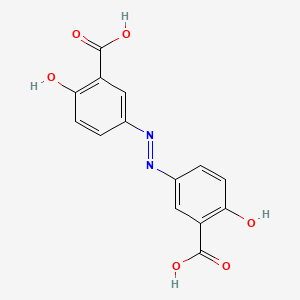 |
0.425 | ||
| ENC002362 |  |
0.692 | D07HBX | 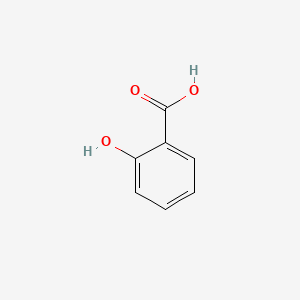 |
0.397 | ||
| ENC005677 |  |
0.569 | D08LFZ | 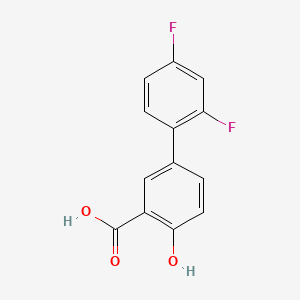 |
0.355 | ||
| ENC002976 |  |
0.471 | D0F5ZM | 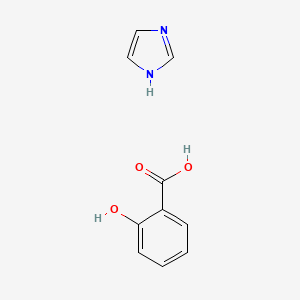 |
0.352 | ||
| ENC005344 |  |
0.425 | D05FTJ | 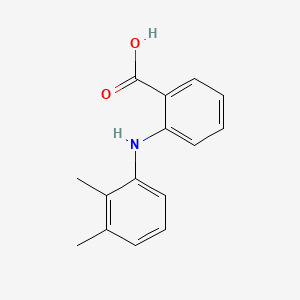 |
0.351 | ||
| ENC000683 |  |
0.419 | D0U1OM |  |
0.346 | ||
| ENC006051 |  |
0.410 | D08IFL |  |
0.342 | ||
| ENC000690 |  |
0.407 | D08QJS | 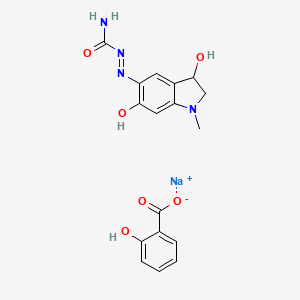 |
0.333 | ||
| ENC000087 |  |
0.405 | D09SOA |  |
0.333 | ||